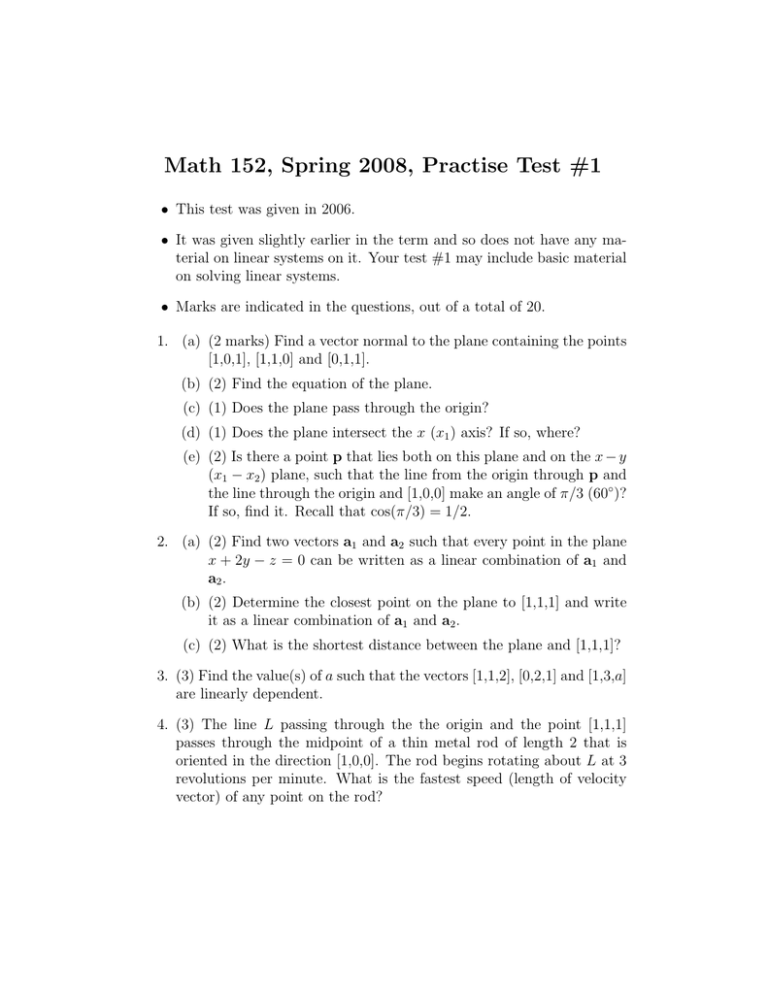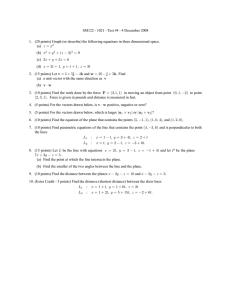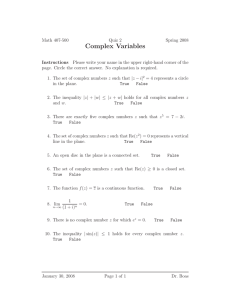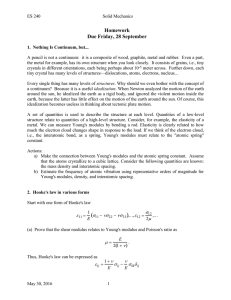Math 152, Spring 2008, Practise Test #1
advertisement

Math 152, Spring 2008, Practise Test #1 • This test was given in 2006. • It was given slightly earlier in the term and so does not have any material on linear systems on it. Your test #1 may include basic material on solving linear systems. • Marks are indicated in the questions, out of a total of 20. 1. (a) (2 marks) Find a vector normal to the plane containing the points [1,0,1], [1,1,0] and [0,1,1]. (b) (2) Find the equation of the plane. (c) (1) Does the plane pass through the origin? (d) (1) Does the plane intersect the x (x1 ) axis? If so, where? (e) (2) Is there a point p that lies both on this plane and on the x − y (x1 − x2 ) plane, such that the line from the origin through p and the line through the origin and [1,0,0] make an angle of π/3 (60◦ )? If so, find it. Recall that cos(π/3) = 1/2. 2. (a) (2) Find two vectors a1 and a2 such that every point in the plane x + 2y − z = 0 can be written as a linear combination of a1 and a2 . (b) (2) Determine the closest point on the plane to [1,1,1] and write it as a linear combination of a1 and a2 . (c) (2) What is the shortest distance between the plane and [1,1,1]? 3. (3) Find the value(s) of a such that the vectors [1,1,2], [0,2,1] and [1,3,a] are linearly dependent. 4. (3) The line L passing through the the origin and the point [1,1,1] passes through the midpoint of a thin metal rod of length 2 that is oriented in the direction [1,0,0]. The rod begins rotating about L at 3 revolutions per minute. What is the fastest speed (length of velocity vector) of any point on the rod?




